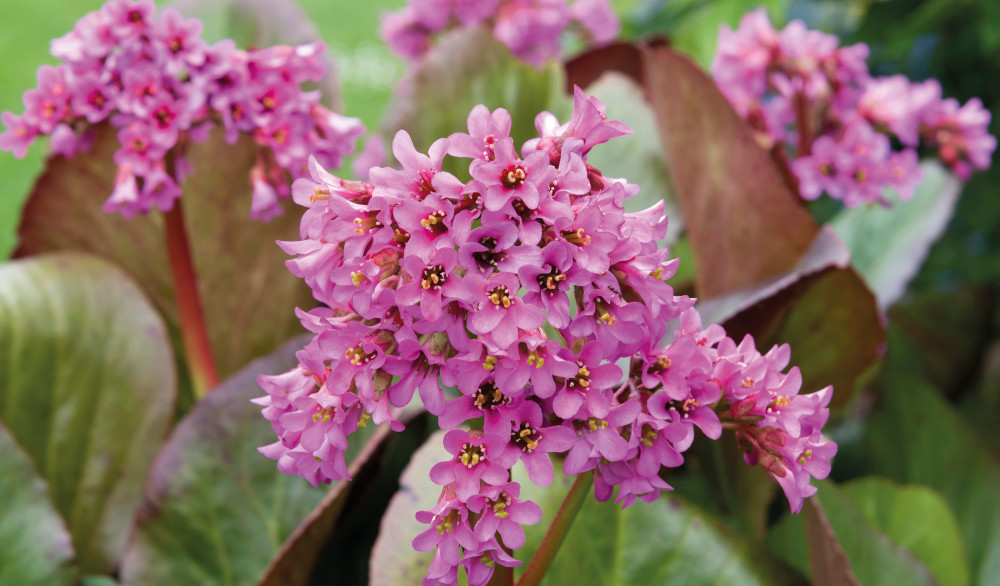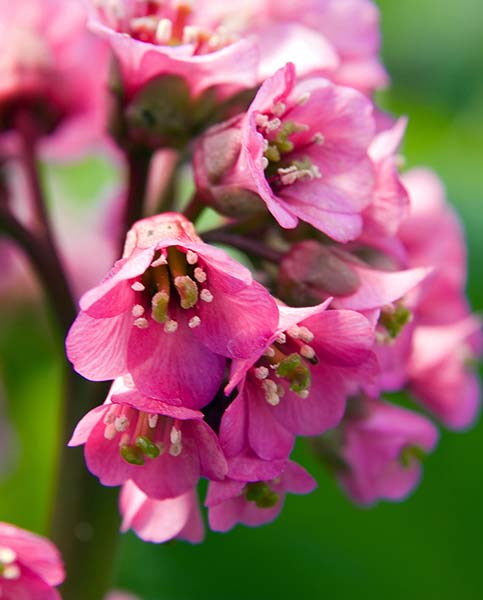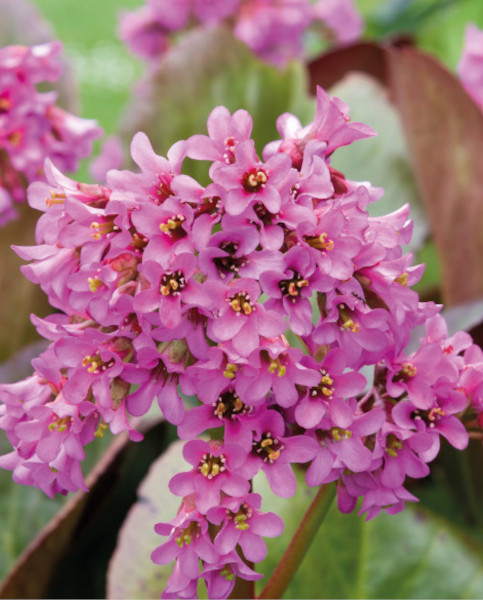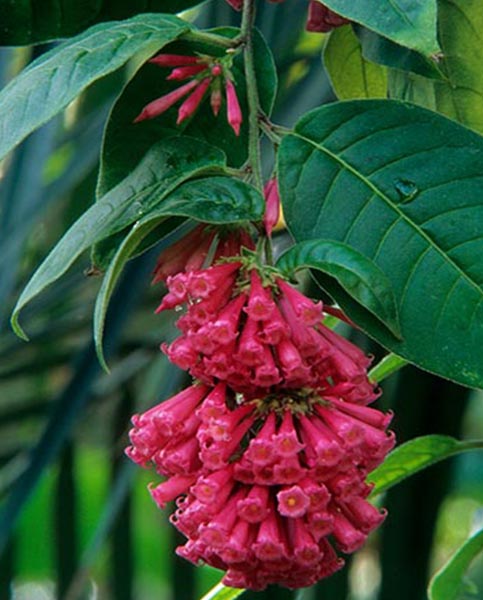How to grow Bergenia
A group of plants native to central Asia commonly known as Elephant Ears, Bergenia belongs to the Saxifragaceae family. These evergreen, fully hardy perennials will grow in almost any well-drained soil and vary in height from 15-50cm and in spread from 50-100cm dependent on variety. Some are even good as cut flowers, although most are grown for their decorative pink or white blooms in spring and their interesting foliage forms. Bergenia are clump-forming rhizomes which will even tolerate drought conditions for part of the year. An annual mulch of well-rotted compost or manure will encourage larger, healthier leaves as will a position in part sun, part shade. Plant in any aspect at the same height as in the pot adding extra grit for drainage if soil is very heavy.

Key Information
Soil pH
Position
Hardiness


Where & when to plant Bergenia
Bergenia is famed for its large, leathery leaves which provide excellent ground cover all year round, and pretty clusters of tubular flowers on sturdy stems in spring. An excellent choice for edging pathways and softening hard edges. ‘Morgenrote’ is thought to be the only variety of bergenia which pushes out a second flush of carmine pink blooms in late summer.
Preferring to grow in part shade, this hardy perennial will thrive in moist well-drained soil which is rich in humus.
Ideally, choose a spot in which is not in direct sun all day. That said, Bergenia ‘Morgenrote’ often does well in both dry sunny gardens and difficult shady spots. They are a strong feature in Beth Chatto’s dry gravel garden in Essex.
Space plants 30-50cm apart if you are planting several together. Bergenia spreads via rhizomes and will form a mat of shiny bold leaves once established.
How to plant Bergenia
Dig a planting hole for your bergenia which is slightly wider and deeper than the root ball of your plant. If you are planting up a large area, group plants together in 3’s or 5’s and plant in random patches or drifts near the front of a border or edge of a pathway for a naturalistic look. Add some grit to your planting holes if you garden on heavy soil and a handful of leaf mould or compost to help young plants off to a good start.
Carefully tease the plants from their pots taking care not to damage the rhizomes before placing in the hole and filling in carefully around the edges with soil. Gently firm in and water your plants well until established.
Bergenia also make great low-maintenance plants for large pots. Use multipurpose compost enriched with organic matter and some grit for drainage to plant into. Always ensure your pot has holes in the base so that water can drain through.

What to plant with Bergenia
Adaptable bergenia can be used as a feature in so many planting schemes and are sadly sometimes overlooked. The bold evergreen foliage makes great border edging and will soften a pathway beautifully, often turning attractive shades of red and orange in autumn suppressing any weeds in their path. The cherry-pink blooms are a magnet to bees, providing a valuable early source of nectar.
Bergenia fits into both modern and traditional garden designs with ease.
We think Bergenia ‘Morgenrote’ makes a fantastic addition to lush, tropical planting schemes. Try teaming it with Hosta ‘Loyalist’, Tree Fern ‘Dicksonia Antarctica’, Dryopteris ‘Kuratae’, Dahlia ‘Mystic Illusion’, Alstroemeria ‘Indian Summer’, and Cestrum elegans ‘Rubrum’ to create a colourful and exotic garden oasis.
Please contact our friendly and helpful Customer Care Team at Hayloft if you would like any further help or planting advice for your Bergenia plants.



How to care for Bergenia
Deadhead faded blooms after the first flush of flowers in spring and remove dried or tatty leaves as you notice them to keep plants healthy and looking tidy. Slugs and snails can hide in decaying foliage and eat away at fresh new growth, so it is always a good idea to remove dead matter regularly.
Mulch the base of your plants in spring each year with well-rotted manure or compost to promote strong fresh growth and large leaves.
Watering your bergenia should not be necessary once established providing you have planted in suitable soil and light conditions. This valuable perennial will spread and fill out shady areas without being invasive - the rhizomes do not grow too deeply, so moving plants or splitting clumps is a fairly simple task.
How to divide Bergenia
Divide congested clumps of bergenia every 3-5 years to help maintain plant vigour and produce more plants for your garden. After several years, the centre of the plants starts to lose energy and die off.
Dig up the plants in spring or autumn with a garden fork and either tease apart sections or cut the rhizomes into smaller pieces. Ensure each piece of rhizome has at least one leaf attached to it. Pot the rhizomes up into multipurpose compost or plant them into your garden straight away. Add a handful of grit around the crown of new plants as they can be susceptible to slug or snail attacks. Water young plants regularly until established.




